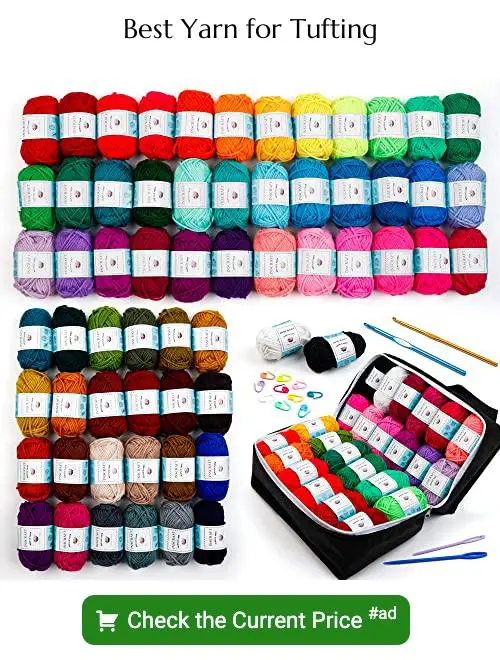Discover the various types of yarn suitable for tufting, as we delve into their unique characteristics and benefits to create stunning textile projects.
Are you looking to try tufting but not sure which yarn to use? Choosing the right type of yarn can make all the difference in your tufting project. With so many options available, it can be overwhelming to decide which one is best for you.
But don’t worry, we’ve got you covered! In this article, we’ll explore different types of yarn for tufting and help you narrow down your choices based on your needs and preferences. So grab a cup of tea and let’s dive into the wonderful world of tufting yarns!
Wool Yarn
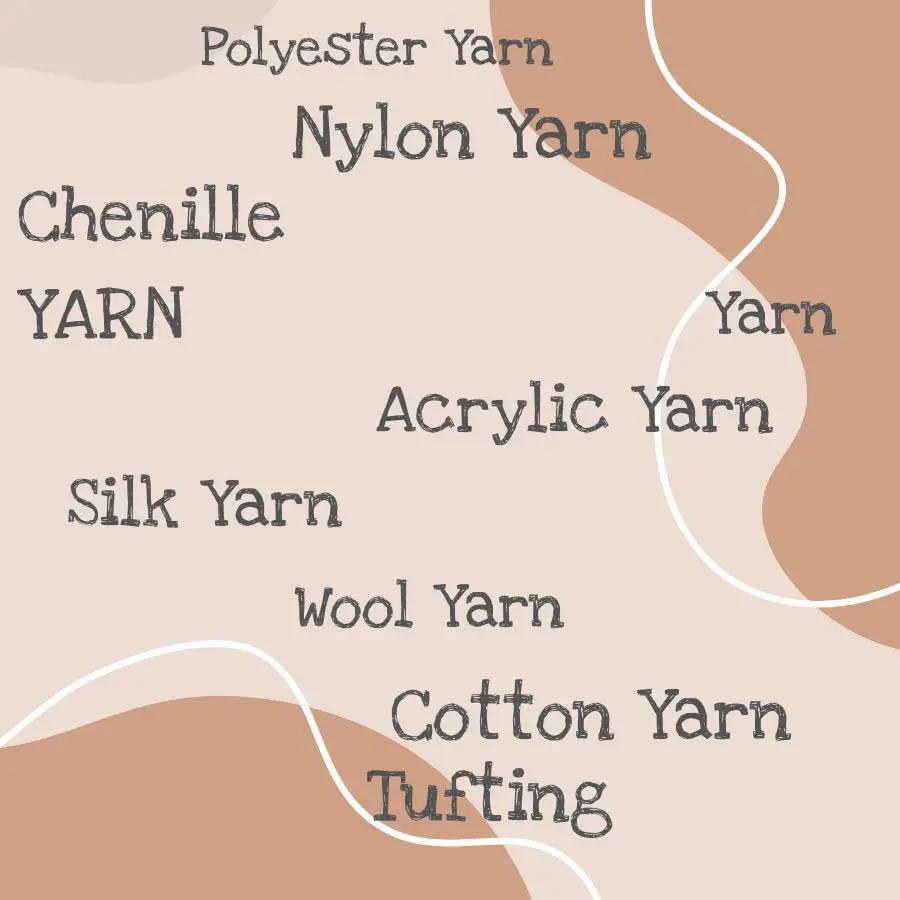
It is made from the fleece of sheep, goats, or other animals and comes in various textures and colors. Wool yarn has excellent insulation properties that make it ideal for creating warm rugs or blankets.
One of the benefits of wool yarn is its elasticity, which allows it to stretch without losing shape. This makes it perfect for tufting projects that require some flexibility such as curved designs or intricate patterns.
Another advantage of wool yarn is its ability to absorb moisture without feeling damp. This means that your rug will remain dry even in humid conditions making it suitable for high traffic areas like hallways or entryways.
When selecting wool yarns for tufting, consider factors such as weight (thickness), texture (smoothness vs roughness), colorfastness (ability not to fade when washed) among others depending on your project needs.
Cotton Yarn
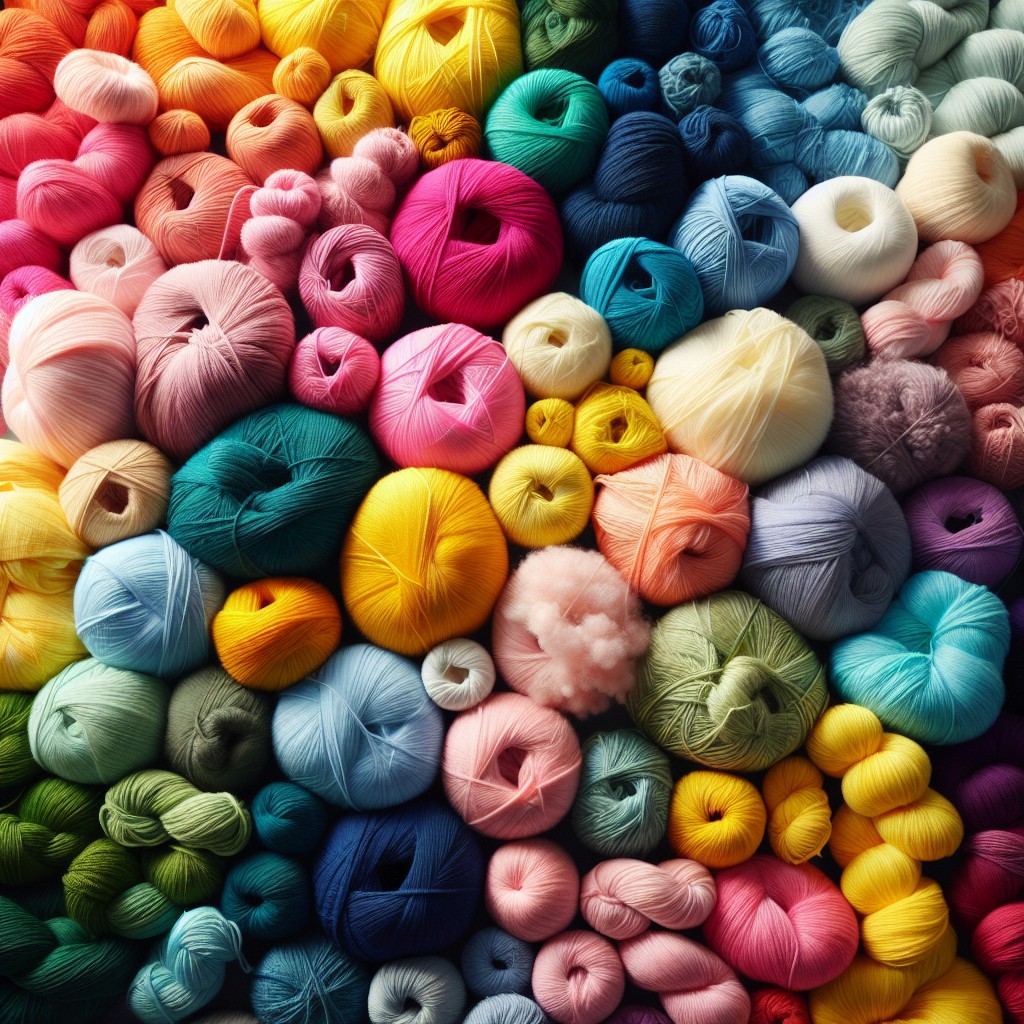
It’s an excellent option for those with sensitive skin or allergies as it’s hypoallergenic and breathable. Cotton yarn comes in various weights ranging from lace to bulky, making it suitable for different types of tufting projects.
Properties: One of the unique properties of cotton yarn is that it absorbs moisture well without feeling damp or clammy. This makes cotton ideal for creating rugs or other home decor items that may be exposed to spills or high humidity levels.
Uses: Cotton yarn can be used alone or blended with other fibers such as wool, silk, acrylics among others depending on the desired texture and appearance. Its natural color ranges from white to beige but can also be dyed into vibrant colors using natural dyes.
When selecting cotton yarns specifically designed for rug-making purposes ensure they are strong enough not only withstand wear but also hold up under tension when being pulled through the backing fabric during tufting process.
Acrylic Yarn
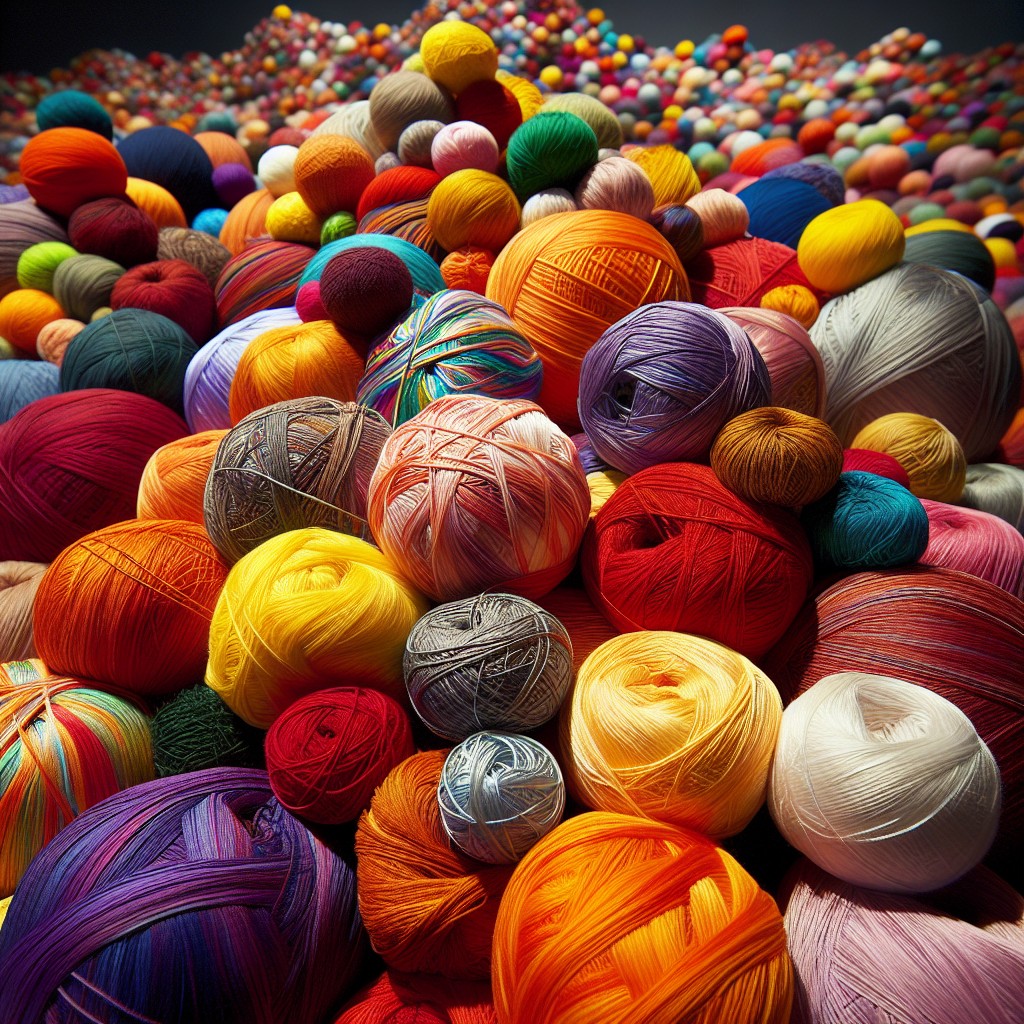
It is made from synthetic fibers, which makes it durable and easy to care for. Acrylic yarn comes in a wide range of colors, making it perfect for creating vibrant designs.
One of the benefits of using acrylic yarn in tufting is that it has excellent color retention properties. This means that your finished project will maintain its bright colors even after multiple washes or exposure to sunlight.
Another advantage of acrylic yarn is that it’s lightweight compared to other types of yarn like wool or cotton. This makes it ideal for creating rugs or wall hangings that won’t weigh down your space.
However, one thing to keep in mind when using acrylic yarn in tufting projects is its tendency towards pilling (small balls forming on the surface). To avoid this issue, choose high-quality brands with tighter twists and avoid washing them too frequently at high temperatures.
Polyester Yarn
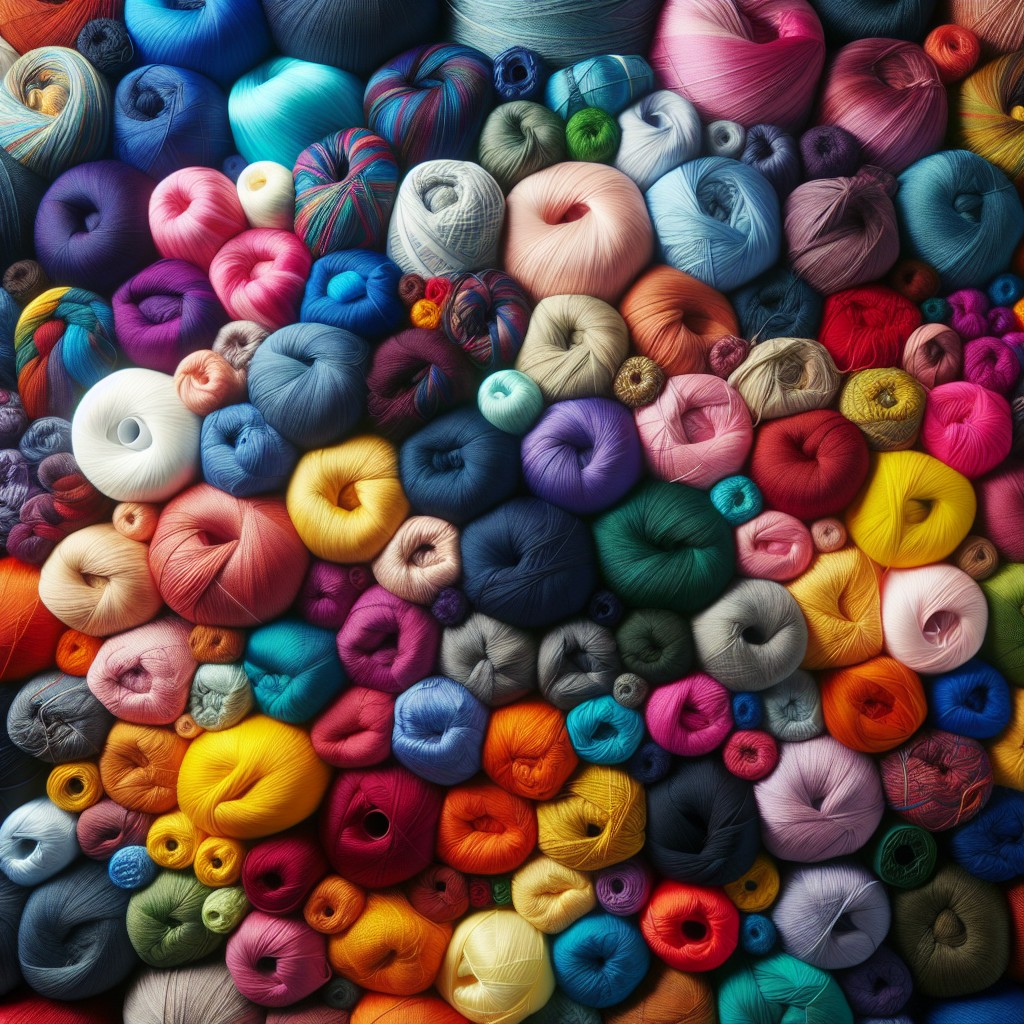
It’s a synthetic fiber that offers many benefits, including durability and resistance to wrinkles, stains, and fading. Polyester yarn is also easy to care for and can be machine washed without losing its shape or color.
One of the advantages of using polyester yarn in tufting is its affordability compared to other natural fibers like wool or silk. It comes in a wide range of colors and textures, making it versatile enough for various types of textile projects.
However, one thing to keep in mind when using polyester yarn for tufting rugs or wall hangings is that it may not have the same level of softness as natural fibers like cotton or wool. So if you’re looking for a softer feel underfoot on your rug project, you might want to consider blending polyester with other materials such as cotton.
Nylon Yarn
It’s a synthetic fiber that’s known for its strength, durability, and resistance to abrasion. Nylon yarn is also easy to clean and maintain, making it ideal for high-traffic areas or outdoor rugs.
One of the benefits of using nylon yarn in tufting is its ability to hold up well over time. It doesn’t easily break or wear down like some natural fibers can do with heavy use.
Nylon has excellent elasticity which allows it to bounce back after being compressed by foot traffic.
Another advantage of using nylon yarn in tufting projects is its versatility when it comes to dyeing options. Nylon takes dye very well and can be dyed into a wide range of colors without losing vibrancy or fading quickly.
Silk Yarn
It has a natural sheen that adds depth and dimension to your finished piece. Silk yarn is also incredibly strong, making it ideal for high-traffic areas such as hallways or living rooms.
One of the benefits of silk yarn is its softness, which makes it comfortable to walk on barefoot. However, this softness can also make it more challenging to work with than other types of yarn because it tends to slip out of the tufting gun’s needle easily.
Another thing you should consider when using silk yarn in your project is its cost; silk can be quite expensive compared to other materials like wool or acrylic. But if you’re looking for an opulent finish that will last long-term, then investing in quality silk may be worth considering.
Silk Yarn offers unique characteristics that set itself apart from other types of fibers used in rug-making projects.
Chenille Yarn
It’s made up of short, velvety fibers that are twisted together to create a fuzzy, caterpillar-like appearance. Chenille yarn comes in various materials such as cotton, polyester or rayon and can be used alone or blended with other types of yarn.
One advantage of using chenille yarn for tufting is that it creates a luxurious finish on your project. The softness and thickness make it ideal for creating rugs, blankets or pillows that you want to snuggle up with.
However, one thing to keep in mind when working with chenille yarn is its tendency to fray easily due to the loose fibers. This can make it challenging when threading through the tufting gun needle but taking extra care while handling will help prevent fraying.
Blended Yarn
Blending can enhance the qualities of each fiber, resulting in a stronger, softer, or more durable yarn. For tufting projects that require specific characteristics such as softness or strength blended yarns are an excellent choice.
For example, wool and acrylic blends offer the warmth and softness of wool with added durability from acrylic fibers. Cotton-polyester blends provide breathability while maintaining shape retention for longer-lasting rugs.
When choosing blended yarn for tufting projects consider the proportion of each fiber used to ensure it meets your desired outcome. Experiment with different combinations until you find one that works best for your project needs.
Characteristics and Uses
Wool yarn is a popular choice due to its natural warmth, durability, and elasticity. Cotton yarn is soft and breathable, making it ideal for summer projects or baby items.
Acrylic yarn is affordable and easy to care for while still providing excellent stitch definition.
Polyester yarn offers strength and resistance against fading or shrinking over time. Nylon Yarn’s high tensile strength makes it perfect for creating durable rugs that can withstand heavy foot traffic without losing their shape.
Silk Yarn adds a luxurious touch with its lustrous sheen but requires special care during washing as compared to other types of fibers used in tufting projects.
Chenille Yarn creates plush textures that are perfect for blankets or pillows while blended yarns offer unique combinations of different fibers’ benefits such as wool-acrylic blends which provide both warmth from wool fiber & ease-of-care from acrylic fiber.
Wool Yarn Benefits
Wool fibers are naturally elastic, making them easy to work with and resistant to wear and tear. They also have excellent insulation properties, which means that woolen rugs will keep your feet warm during the colder months.
Another advantage of wool yarn is its ability to absorb moisture without feeling damp or clammy. This makes it an ideal material for use in high-traffic areas such as hallways or living rooms where spills are likely.
Wool yarn comes in a wide range of colors and textures, allowing you to create unique designs that reflect your personal style. Whether you prefer bold patterns or subtle hues, there’s sure to be a woolen yarn that meets your needs.
Cotton Yarn Properties
It’s made from natural fibers that are breathable and hypoallergenic, making it ideal for items like rugs or blankets that come in contact with the skin. Cotton yarn also has excellent absorbency properties which make it perfect for creating bath mats or kitchen towels.
One of the main benefits of cotton yarn is its ability to hold dye well. This means you can achieve vibrant colors without worrying about fading over time.
Cotton yarn has good stitch definition which makes it easy to work with when tufting intricate designs.
When selecting cotton yarn for your tufting project, consider the weight and thickness of the thread as this will affect how dense your pile will be. Thicker threads create a denser pile while thinner threads produce a more delicate texture.
Acrylic Yarn Advantages
It’s made from synthetic fibers that mimic the look and feel of natural fibers like wool or cotton but at a fraction of the cost. Acrylic yarn is also easy to care for as it can be machine washed and dried without losing its shape or color.
One advantage of acrylic yarn over other types is that it comes in an array of colors, making it perfect for creating vibrant designs with bold hues. Acrylic yarn has excellent resistance to fading from sunlight exposure compared to other materials such as cotton.
Another benefit of using acrylic yarn in tufting projects is that it’s lightweight yet warm which makes it ideal for creating cozy blankets or throws without adding too much bulkiness. Its soft texture also makes this type of fiber comfortable against your skin when used in clothing items like scarves or hats.
Polyester Yarn Features
It’s made from synthetic fibers that are resistant to moisture, mildew, and insects. Polyester yarn is also easy to care for as it can be machine washed and dried without losing its shape or color.
One of the key features of polyester yarn is its strength. It’s stronger than cotton but not as strong as wool or nylon.
This makes it ideal for projects that require a sturdy yet lightweight material such as rugs, pillows, and upholstery.
Another feature of polyester yarn is its versatility in terms of color options. Since it’s a synthetic fiber, polyester can be dyed in almost any shade imaginable without fading over time like natural fibers tend to do.
When selecting polyester yarn for tufting projects, consider the weight (thickness) you need based on your desired outcome – thicker weights will create more plush results while thinner weights will produce finer details with less bulkiness.
Nylon Yarn Applications
It’s also resistant to abrasion, mildew, and insects. Nylon yarn is perfect for high-traffic areas such as hallways or living rooms where the rug will be subjected to constant wear and tear.
Nylon yarn has excellent color retention properties which make it ideal for creating vibrant designs that won’t fade over time. This type of yarn can be used in both hand-tufted rugs as well as machine-tufted ones.
One thing to keep in mind when using nylon yarn is that it can be slightly more difficult to work with than other types of fibers due to its slippery texture. However, this shouldn’t deter you from using it if you’re looking for a durable option that will stand up against heavy foot traffic.
Silk Yarn Qualities
It has a natural sheen that adds depth and dimension to your designs, making them stand out from the rest. Silk yarn is also incredibly soft to the touch, which makes it perfect for creating cozy rugs or blankets.
One of the most notable qualities of silk yarn is its strength. Despite being delicate in appearance, silk fibers are actually one of the strongest natural fibers available.
This means that your tufted creations made with silk will last longer than those made with other materials.
Another benefit of using silk yarn for tufting is its ability to absorb dyes easily. This allows you to create vibrant colors without worrying about fading over time.
However, there are some downsides when it comes to using silk yarn in rug-making projects as they tend not be as durable as wool or synthetic blends due their delicacy nature but if used properly can make beautiful pieces that will last long enough if well taken care off.
Chenille Yarn Characteristics
It’s made up of short, velvety piles that give it a fuzzy appearance and feel. Chenille yarns are typically made from cotton or synthetic fibers like polyester or acrylic.
One of the main characteristics of chenille yarn is its ability to create depth in your tufted projects. The plush texture adds dimensionality, making your designs stand out even more.
Another advantage of using chenille yarn for tufting is that it’s incredibly soft and comfortable underfoot. This makes it an excellent option for creating rugs, blankets, or other cozy home decor items.
When selecting chenille yarns for your project, keep in mind that they can be quite thick compared to other types of rug-making materials. As such, you may need to adjust the size setting on your tufting gun accordingly.
Blended Yarn Combinations
They offer the best of both worlds and can be an excellent choice for tufting projects. Blending different types of yarn creates a new fiber that is stronger, softer, and more durable than the individual fibers.
For example, blending wool with acrylic results in a soft yet sturdy yarn that is easy to work with and holds up well over time. Cotton blended with polyester produces a lightweight yet strong fiber suitable for rugs or wall hangings.
When choosing blended yarns for tufting projects, consider the ratio of each fiber in the blend as it affects how your project will turn out. A higher percentage of one type may result in different textures or colors compared to another blend ratio.
Yarn Selection Tips
Here are some tips to help you choose the best yarn for your tufting project:.
1. Consider the purpose of your project: Are you making a rug or a wall hanging? The type of yarn suitable for each may differ.
2. Look at fiber content: Different fibers have unique characteristics that affect how they behave during tufting and how they look after completion.
3. Choose appropriate weight/thickness: The thickness of the yarn affects both its appearance and durability in use.
4. Check yardage requirements: Make sure you have enough yardage to complete your project without running out mid-way through!
5. Experiment with different types of yarns before committing fully on one type.
Best Rug Yarn for Tufting
The best rug yarn for tufting depends on various factors such as the desired texture, color, and durability of your rug. Wool yarn is an excellent choice for its natural resilience and softness while cotton offers a more affordable option with good absorbency properties.
If you’re looking for something that’s easy to work with and has great color options, acrylic yarn might be your best bet. Polyester or nylon blends are also popular choices due to their strength and resistance to wear-and-tear.
Ultimately, the type of fiber you choose will depend on what qualities are most important in your project. Consider factors like pile height (the length of each strand), thickness (measured in ply), weight per yard (usually measured in ounces) when selecting which type of rug yarn would work best.
Remember that different fibers have different care requirements too – wool needs special attention when washing while synthetic fibers can usually be machine washed without issue.
What Size Yarn Should I Use for Tufting?
The thickness of the yarn affects how dense and plush your finished project will be. Generally, thicker yarns create a more textured and fluffy look while thinner ones produce a smoother finish.
For rug tufting, bulky or super bulky weight yarns are commonly used as they provide excellent coverage and durability. However, if you prefer a finer texture or want to add intricate details to your design, using lighter weight yarn such as worsted or sport can also work well.
It’s important to note that different types of fibers may behave differently even when they have the same weight classification. For example, woolen bulky-weight may appear fluffier than acrylic bulky-weight due to their unique characteristics.
How Much Yarn Do I Need for Rug Tufting?
As a general rule of thumb, for a 2′ x 3′ rug with medium pile height (around 1/2 inch), you will need approximately six pounds or around twelve cones (each cone contains about half-pound) of yarn. However, if you’re making a larger or smaller rug or using thicker/thinner yarns than recommended in this example – adjust accordingly.
It’s always better to have more than enough rather than running out mid-project! So make sure to calculate carefully before starting your project and purchase extra just in case. Remember that different types of fibers can vary in their yardage per pound so be sure to check each type’s specifications before purchasing.
Can You Use Bulky Yarn in Tufting Gun?
The answer is yes! Bulky yarns are great for creating thick and cozy rugs, but there are some things to keep in mind when using them with a tufting gun.
Firstly, make sure that your chosen bulky yarn fits through the needle of your tufting gun. Some guns have smaller needles than others, so check before starting your project.
Secondly, be aware that thicker yarns may require more force to push through the fabric backing and into place.
It’s also important to note that using bulkier yarn will result in larger loops on the surface of your rug or textile piece. This can create a unique texture and look but may not be suitable for all projects.
The Difference Between Rug Yarn and Regular Yarn
The answer is yes! Rug yarns are specifically designed for use in rug making and have unique properties that make them ideal for this craft. Regular knitting or crochet yarns can be used but may not produce the same results as using a dedicated rug-making material.
Rug yarn typically has a thicker, more durable construction than regular knitting or crochet wool. It’s also often made from natural fibers like wool or cotton, which makes it more resilient to wear and tear over time.
Another key difference between these two types of materials is their texture. Rug-making materials tend to have less stretch than traditional knitting/crochet wool because they need to hold up under heavy foot traffic without losing shape.
So if you’re planning on making rugs with your tufting gun, we recommend investing in some high-quality rug-making materials rather than trying to repurpose your existing stash of regular crafting supplies.
Rug Yarn FAQs
Here are some frequently asked questions to help guide your journey:.
– What is rug yarn? Rug yarn is a type of thick and durable yarn that’s specifically designed for making rugs and other heavy-duty textile projects.
– Can I use regular knitting or crochet yarn for tufting? While it’s possible to use regular knitting or crochet yarn for tufting, it may not be as sturdy or long-lasting as rug-specific options. Rug-making requires a thicker and more robust material that can withstand foot traffic, so using specialized rug-yarn will give better results.
– How much yardage do I need per project? The amount of yardage needed depends on the size of your project. A small accent piece might only require one skein while larger rugs could take several cones worth.
Do You Need Specific Yarn for Tufting?
The answer is yes and no. While there are some types of yarn that work better than others for tufting, there isn’t a one-size-fits-all solution.
It all depends on your project’s needs and preferences.
For instance, wool yarn is an excellent choice for rug tufting because of its durability and natural resistance to stains and dirt. Cotton yarn is another popular option due to its softness, breathability, and absorbency properties.
On the other hand, acrylic yarn offers a wide range of colors at an affordable price point but may not hold up as well over time compared to natural fibers like wool or cotton.
Ultimately it’s essential to consider factors such as fiber content (natural vs synthetic), weight (thickness), texture (smooth vs fuzzy), color options available when selecting your tufting material.
Can You Use Acrylic Yarn for Tufting?
But can you use acrylic yarn for tufting? The answer is yes! Acrylic yarn can be used in tufting projects as it has similar properties to wool but at a lower cost. It’s also available in various colors and textures, making it an excellent option for creating unique designs.
However, keep in mind that acrylic yarn may not have the same softness or warmth as natural fibers like wool or cotton. Some types of acrylic may pill over time with heavy use or washing.
When selecting your tufting yarns, consider the project’s purpose and desired outcome before choosing any material type. If you’re looking to create a durable rug that will withstand high traffic areas such as hallways or entryways without breaking the bank on materials costs – then using an affordable synthetic fiber like acrylic could be perfect!
Yes! You can absolutely use acrylic yarn for your next tufting project if budget-friendly options are what you need while still achieving great results with beautiful color choices available too!.
How to Wind Yarn Cones for Rug Tufting?
And if you want to save money and buy your yarn in bulk, winding it into cones is the way to go. Winding your own cones can be intimidating at first, but with some practice and patience, it’s easy enough for anyone to do.
To wind your own yarn cone for rug tufting:.
- Start by finding an empty cardboard cone or making one yourself using thick paper or cardstock.
- Secure the end of the skein of yarn onto the tip of the cone with tape.
- Begin wrapping around from top down until reaching about 1/4 inch from bottom edge
- Cut off excess tail leaving about 6 inches
- Tape over wrapped area on bottom edge
- Slide off cardboard tube
Once wound up properly into cones that fit snugly onto your tufting gun spindle (or any other tool), they will make working on larger projects much easier as they won’t get tangled up like skeins often do.
Conclusion
Each type of yarn has its unique characteristics and benefits that can enhance the texture, durability, and appearance of your project. Whether you’re a beginner or an experienced tufter, understanding these differences will help you make informed decisions when selecting yarns for your next rug or textile creation.
Remember to consider factors such as fiber content, weight/thickness (gauge), color options available in each type of yarn before making a purchase. It’s essential to follow manufacturer instructions on how much yardage is required per square inch/foot/meter depending on the size of your project.
FAQ
Is acrylic yarn better than wool for tufting?
Answer: Wool yarn is better than acrylic yarn for tufting due to its increased resistance, environmental friendliness, and suitability for both rugs and wallhangings.
What is the best yarn for making a rug?
The best yarn for making a rug is wool, sisal, hemp, or cotton rag yarn, as they are strong and durable fibers suitable for rug wefts.
What material is best for tufting?
The best material for tufting depends on your rug’s design, with popular choices including acrylic, cotton, and wool, each offering different characteristics such as a shorter and flatter pile for acrylic, and a softer, thicker feel for wool.
What size yarn do you need for a tufting gun?
Answer: For a tufting gun, you generally need 200g yarn per square foot (30cm x 30cm) for an AK-1 cut pile machine with a pile height of approximately 12mm tall, but it’s recommended to have extra yarn as backup.
How do the durability and texture of synthetic yarns compare to natural yarns for tufting purposes?
"Synthetic yarns generally offer higher durability and a smoother texture compared to natural yarns when used for tufting purposes."
Are there any specific brands of yarn renowned for their quality and suitability for tufting projects?
Answer: Some renowned yarn brands for tufting projects include Patons, Bernat, Lion Brand Yarn, and Red Heart.
Can different yarn materials be combined in a single tufting project, or is it better to stick to one type?
Different yarn materials can be combined in a single tufting project, though it may be easier to work with just one type.
